How Does a Drill Pump Work?
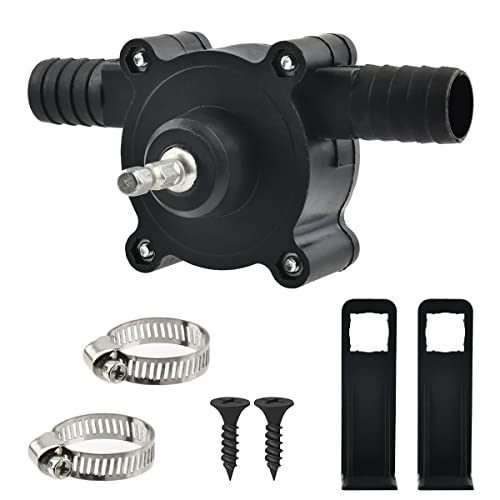
Drill pumps are a versatile tool that can be used for a variety of tasks. Whether you need to transfer liquids from one container to another, drain a pool, or pump water out of a flooded basement, a drill pump can make the job easier and faster. But how exactly does a drill pump work?
At its core, a drill pump is a small, portable device that can be attached to a power drill. It uses the rotational motion of the drill to create suction and move liquid from one place to another. The pump is typically made up of a housing, an impeller, and an inlet and outlet port.
The impeller is a rotating component that is responsible for creating the suction. When the drill is turned on, the impeller spins rapidly, creating a low-pressure zone around it. This low pressure then allows liquid to be drawn into the pump through the inlet port.
Once the liquid is inside the pump, the impeller continues to rotate and forces the liquid out through the outlet port. The pressure created by the rotating impeller pushes the liquid through the outlet and into the desired location, such as a different container or a drainage system.
What is a drill pump?
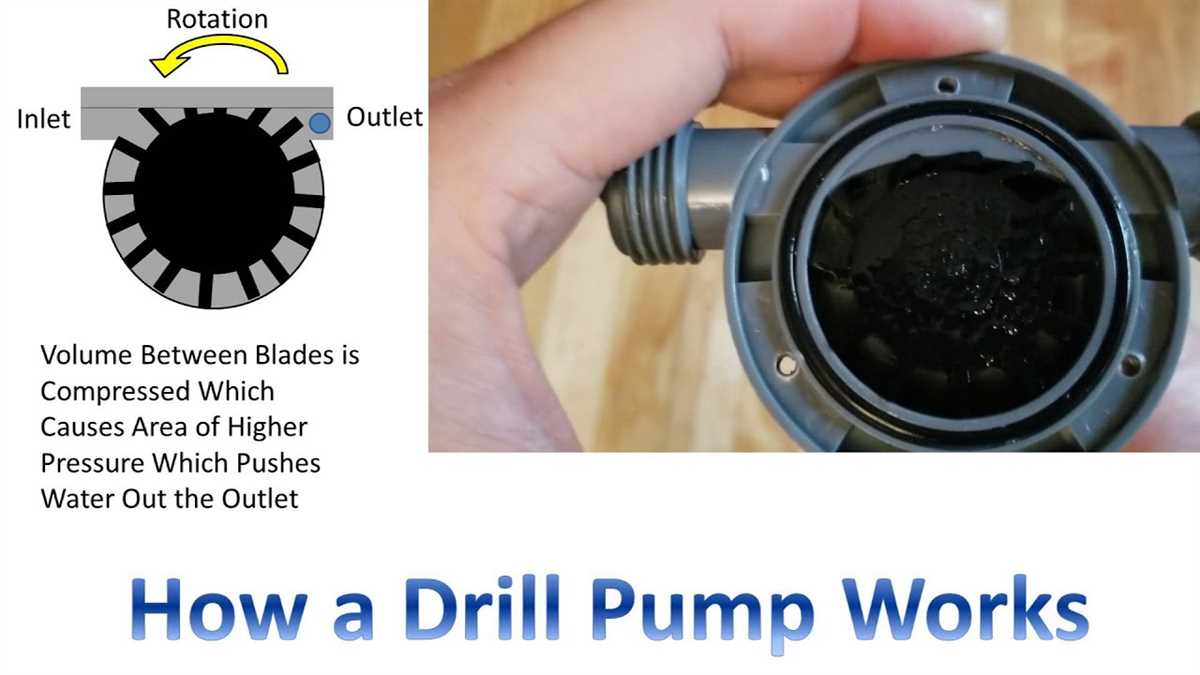
A drill pump is a small device that can be attached to a hand drill or a power drill to pump liquids. It is primarily used for transferring fluids from one location to another, such as draining water from a clogged sink or pumping oil from a car engine.
Drill pumps are generally compact and portable, allowing them to be easily transported and used in various locations. They are often made of durable materials such as plastic or metal to ensure long-lasting performance.
These pumps are typically operated by connecting them to the chuck of a drill and utilizing the rotational motion of the drill to drive the pump mechanism. As the drill spins, it creates suction within the pump, drawing in the liquid. The liquid is then expelled through an outlet or hose attached to the pump.
Key features of drill pumps:
- Compact size: Drill pumps are designed to be small and lightweight, making them easy to handle and transport.
- Easy to use: The simple design of drill pumps allows for quick and hassle-free setup and operation.
- Versatile: Drill pumps can be used to pump various liquids, including water, oil, and even some chemicals.
- Efficient: By utilizing the power of a drill, these pumps can quickly transfer liquids from one place to another.
Applications of drill pumps:
Due to their versatility, drill pumps can be used in a wide range of applications. Some common uses include:
- Draining water from flooded areas
- Emptying fish tanks or aquariums
- Transferring water or other liquids from containers or vessels
- Removing liquids from floor drains
- Pumping oil or other fluids from engines or machinery
Overall, drill pumps are handy tools that provide a convenient and effective solution for pumping liquids in various situations. Whether you need to remove water from a flooded basement or transfer oil from a car, a drill pump can be a valuable addition to your toolkit.
Main parts of a drill pump
A drill pump is a versatile tool that can be attached to a standard power drill to pump various liquids. It consists of several main parts, each serving a specific function in the pumping process:
- Drill attachment: This is the part of the pump that connects to the power drill. It usually has a cylindrical shape with threads or clips to securely attach to the drill.
- Intake and outlet hoses: The pump has two hoses – an intake hose and an outlet hose. The intake hose draws the liquid into the pump, while the outlet hose delivers the liquid to the desired location.
- Impeller or rotor: The impeller is a rotating component inside the pump that creates suction and moves the liquid. It is usually made of durable materials such as plastic or metal and is designed with fins or blades to facilitate the pumping action.
- Sealing mechanisms: To prevent leaks and ensure efficient pumping, a drill pump employs various sealing mechanisms. These may include gaskets, O-rings, or rubber seals that create a tight connection between the pump and the hoses.
- Inlet and outlet valves: The pump has two valves – an inlet valve and an outlet valve. The inlet valve opens to allow liquid to enter the pump, while the outlet valve opens to let the liquid flow out.
- Housing: The housing of a drill pump is typically made of durable plastic or metal. It encloses the internal components and provides protection and stability to the pump.
Mechanism of a drill pump
A drill pump is a device that allows you to use your power drill to move liquids from one place to another. It is a small, portable pump that can be easily attached to your drill, making it a convenient tool for various applications, such as pumping water, oil, or other fluids.
The mechanism of a drill pump is relatively simple. It consists of a housing with an inlet and an outlet, a pump impeller, and a shaft. The inlet is where the liquid enters, while the outlet is where the liquid is discharged. The pump impeller is responsible for creating the necessary suction and pressure to move the liquid through the pump.
1. Attachment
To use a drill pump, you need to attach it to your power drill. Most drill pumps come with a universal attachment that can fit onto any standard power drill. To attach the pump, simply slide it onto the drill chuck and tighten it securely.
2. Priming
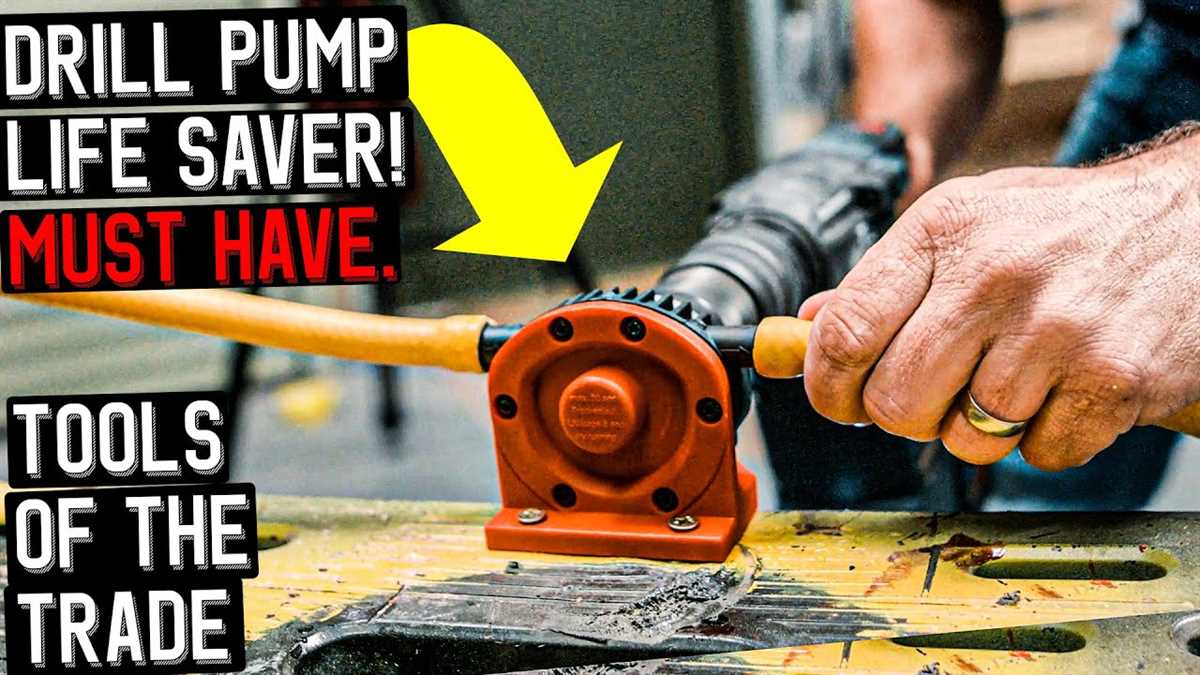
Before you can start pumping, you need to prime the pump. Priming is the process of removing air from the pump and filling it with liquid to create the necessary suction. To prime the pump, you need to make sure that the inlet is fully submerged in the liquid you want to pump.
3. Operation
Once the pump is primed, you can start the operation by turning on your power drill. As you turn on the drill, the pump impeller starts rotating. The rotation of the impeller creates a centrifugal force, which pushes the liquid outward, creating a low-pressure area at the center of the impeller.
This low-pressure area causes the liquid to be drawn into the pump through the inlet. As the liquid enters the pump, it is accelerated by the rotating impeller and forced through the outlet. The liquid is then discharged from the pump to the desired location.
4. Flow rate and capacity
The flow rate and capacity of a drill pump depend on various factors, such as the power of your drill, the size and design of the pump, and the viscosity of the liquid you are pumping. Generally, drill pumps have a relatively low flow rate and capacity compared to larger, specialized pumps.
It is important to note that drill pumps are not designed for heavy-duty pumping tasks. They are intended for small-scale applications and are most commonly used for draining water from small areas, such as flooded basements or clogged sinks.
Overall, the mechanism of a drill pump is simple yet effective. It allows you to easily convert your power drill into a versatile pump for various liquid transfer tasks. By understanding its mechanism and following the proper instructions, you can make the most out of your drill pump and complete your pumping tasks efficiently.
How does a drill pump work?
A drill pump is a versatile tool that can be easily attached to a power drill to transfer various liquids. It works by utilizing the rotational power of the drill to create suction and create a flow of liquid.
Components of a drill pump
- Impeller: The impeller is the key component of the drill pump. It is a rotating device with blades that moves the liquid through the pump.
- Inlet and outlet: The drill pump has an inlet where the liquid enters and an outlet where the liquid exits after being pumped.
- Housing: The housing of the drill pump holds all the components together and provides stability.
How it works
To use a drill pump, you simply attach it to the power drill. The impeller inside the pump is connected to the drill’s shaft. When the drill is turned on, the rotational force is transferred to the impeller, causing it to spin.
As the impeller spins, it creates a low-pressure area near the inlet of the pump. This low pressure causes the liquid to be drawn into the pump through the inlet. The impeller then pushes the liquid towards the outlet, creating a flow.
The flow rate of the pump depends on various factors including the speed of the drill, the design of the impeller, and the viscosity of the liquid being pumped.
Applications of a drill pump
A drill pump is commonly used in a variety of applications, such as:
- Emptying flooded areas
- Transferring water from one container to another
- Draining fish tanks or pools
- Pumping oil or other fluids
Important considerations
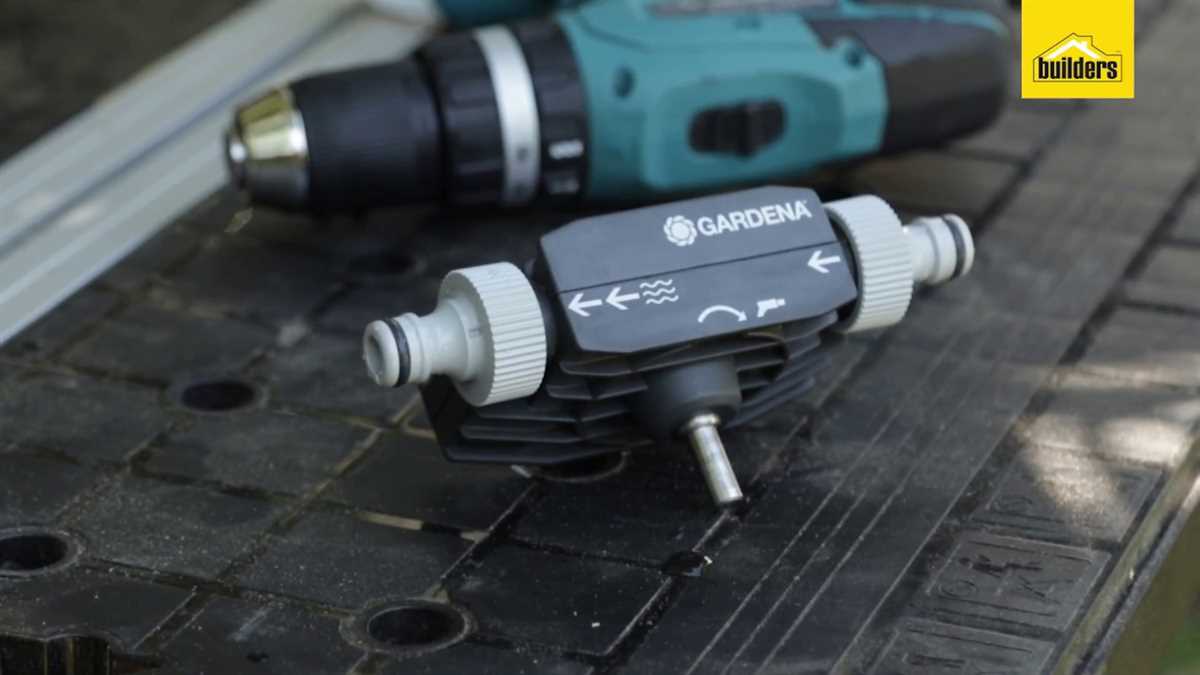
When using a drill pump, it is important to consider the following:
- Compatibility: Ensure that the drill pump is compatible with your power drill.
- Liquid compatibility: Check if the drill pump is suitable for the type of liquid you are pumping.
- Sealing: Ensure that all connections are properly sealed to prevent leaks.
- Safety: Follow safety guidelines and wear appropriate protective gear when using the drill pump.
A drill pump is a convenient tool that can make liquid transfer tasks easier and more efficient. By understanding how it works and following the necessary precautions, you can effectively use a drill pump for various applications.
How does it use drill power?
A drill pump is a versatile tool that can be powered by an electric or cordless drill. It utilizes the rotational motion and power of a drill to transfer liquids from one container to another. Here’s how it works:
1. Attachment
To use a drill pump, you need to attach it to the drill. Most drill pumps come with a threaded attachment that can be easily connected to the drill chuck. Make sure to secure the attachment tightly to avoid any leaks or accidents.
2. Priming
Before you can start pumping, you may need to prime the pump. Priming involves filling the pump and hoses with the liquid you want to transfer. This is important to remove any air pockets and fully saturate the pump with the liquid.
3. Directional Flow
The drill pump has an inlet and an outlet. The inlet is connected to the source of the liquid, while the outlet is connected to the container or area where you want to transfer the liquid. The rotational motion of the drill creates a suction at the inlet, drawing the liquid into the pump.
4. Impeller Action
As the liquid enters the pump, it passes through an impeller. The impeller consists of blades or vanes that rotate with the drill’s motion. These blades push the liquid forward, creating pressure and forcing it out of the outlet.
5. Fluid Transfer
Once the pump is primed and the drill is turned on, the liquid will flow from the source through the pump and into the container or area of transfer. The speed and efficiency of the transfer will depend on various factors, including the power and speed of the drill, the viscosity of the liquid, and the diameter and length of the hoses.
6. Safety Precautions
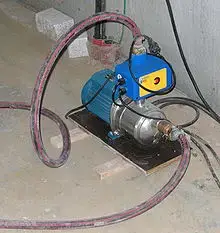
When using a drill pump, it’s important to follow safety precautions. Make sure the drill is securely attached to the pump and that all connections are tight. Be mindful of the liquid’s temperature and any potential hazards. It’s also important to wear appropriate protective gear, such as gloves and goggles, to prevent injury.
In conclusion, a drill pump uses the power and rotational motion of a drill to transfer liquids. By attaching the pump to the drill, priming it, and creating a directional flow with the impeller action, the pump can efficiently move liquids from one container to another. It’s a versatile tool that can be useful for various applications.
Applications of a drill pump
A drill pump is a versatile tool that can be used in various applications. Its ability to convert the rotational motion of a drill into pumping action makes it useful in many different situations. Below are some common applications of a drill pump:
1. Emergency water removal
In the event of flooding or water leaks, a drill pump can be used to quickly remove water from basement, boats, or other flooded areas. Its lightweight and portable design make it easy to maneuver in tight spaces.
2. Transferring liquids
A drill pump can be used to transfer liquids from one container to another. This is particularly useful when dealing with fluids that are difficult to pour or handle, such as oil, chemicals, or fuel.
3. Emptying pool or spa
When it’s time to clean or maintain a pool or spa, a drill pump can be used to quickly empty the water. It can also be used to remove debris that may have accumulated at the bottom of the pool or spa.
4. DIY projects
A drill pump can be a valuable tool for various DIY projects. It can be used for tasks such as changing the oil in a car, filling or emptying water tanks, or even creating a makeshift sprinkler system for watering plants.
5. Aquarium maintenance
Keeping an aquarium clean and maintaining proper water quality can be a tedious task. A drill pump can simplify the process by allowing easy removal of water and debris from the tank.
6. Pumping water from wells
In situations where a traditional water pump may not be available, a drill pump can be used to pump water from wells. This can be especially useful in remote or off-grid locations.
7. Emptying clogged drains
If a sink or drain is clogged, a drill pump can be used to remove standing water and unclog the drain. By creating suction and pressure, it can help to dislodge debris and clear the blockage.
These are just a few examples of the applications of a drill pump. Its versatility and ease of use make it a handy tool to have in various situations.
Where can a drill pump be used?
A drill pump is a versatile tool that can be used in various situations where a sufficient amount of liquid needs to be transferred. Here are some common applications where a drill pump can be used:
1. Emptying flooded areas:
Drill pumps are commonly used to remove water from flooded basements, swimming pools, and other areas that have experienced water damage. These pumps can quickly extract large volumes of water, allowing for a faster and more efficient clean-up process.
2. Draining water from tanks and containers:
If you need to drain water from a large tank or container, a drill pump can be a convenient solution. Whether it’s emptying a rainwater barrel or transferring water from one container to another, a drill pump can make the task much easier and quicker.
3. Extracting water from wells and underground sources:
In remote areas where access to a traditional water supply may be limited, a drill pump can be used to draw water from wells, underground sources, or even rivers and lakes. This can be especially useful for camping trips, remote construction sites, and other outdoor activities.
4. Transferring fluids for DIY projects:
Drill pumps can also be used for various DIY projects that involve transferring liquids. Whether you need to empty a fish tank, pump oil from a car, or transfer chemicals for a small-scale experiment, a drill pump can provide a simple and efficient solution.
5. Emergency situations:
In emergency situations, such as power outages or natural disasters, a drill pump can be a valuable tool for quickly removing water from flooded areas. It can help prevent further damage to property and provide a temporary solution until professional help arrives.
Overall, a drill pump is a useful tool to have in your toolbox, as it can be used in a variety of situations where you need to transfer liquids quickly and efficiently.
What can a drill pump be used for?
A drill pump is a versatile tool that can be used for various tasks. Here are some common uses of a drill pump:
- Emptying flooded areas: A drill pump can be used to quickly remove water from flooded basements, swimming pools, or any other areas that have been affected by water damage.
- Transferring liquids: Whether you need to transfer water, oil, or other liquids from one container to another, a drill pump can make the process quick and easy. It can be used to empty water tanks, drain clogged sinks, or even fill up a fish tank.
- Emptying RV or boat holding tanks: If you own an RV or a boat, a drill pump can be a handy tool for emptying the holding tanks. It allows you to quickly and efficiently drain the waste, making the process much cleaner and more convenient.
- Emptying hot tubs or spas: When it’s time to clean or maintain your hot tub or spa, a drill pump can simplify the process of emptying the water. It can save you time and effort compared to using a traditional water pump.
- Creating a makeshift water fountain: With the help of a drill pump, you can turn a container filled with water into a makeshift water fountain. The pump will circulate the water, creating a visually appealing and relaxing effect.
- Draining water from a garden pond: If you have a garden pond, a drill pump can make it easier to drain the water for cleaning or maintenance purposes. It allows you to quickly remove the water without disturbing the plants and fish.
These are just a few examples of what a drill pump can be used for. Its versatility and convenience make it a valuable tool for various applications.
Maintenance and care of a drill pump
Proper maintenance and care of your drill pump can help extend its lifespan and ensure optimal performance. Here are some important tips to keep in mind:
1. Cleaning
Regularly clean your drill pump to remove any debris or dirt that may have accumulated. This can be done by simply rinsing it with water or wiping it with a damp cloth. Avoid using harsh chemicals or solvents as they may damage the pump.
2. Inspecting
Inspect the drill pump regularly for any signs of damage or wear. Look for cracks, leaks, or loose connections. If any issues are found, repair or replace the affected parts immediately to prevent further damage.
3. Lubrication
Some drill pumps may require occasional lubrication to ensure smooth operation. Consult the manufacturer’s instructions to determine if lubrication is necessary and the recommended type of lubricant to use.
4. Storage
When not in use, store your drill pump in a clean and dry area. Avoid exposing it to extreme temperatures or moisture, as this can cause damage. It’s also a good idea to cover the pump with a protective bag or case to prevent dust or debris from settling on it.
5. Operating precautions
Follow the operating instructions provided by the manufacturer to prevent misuse or damage to the drill pump. Avoid exceeding the recommended maximum flow rate or using the pump with incompatible fluids.
6. Regular maintenance
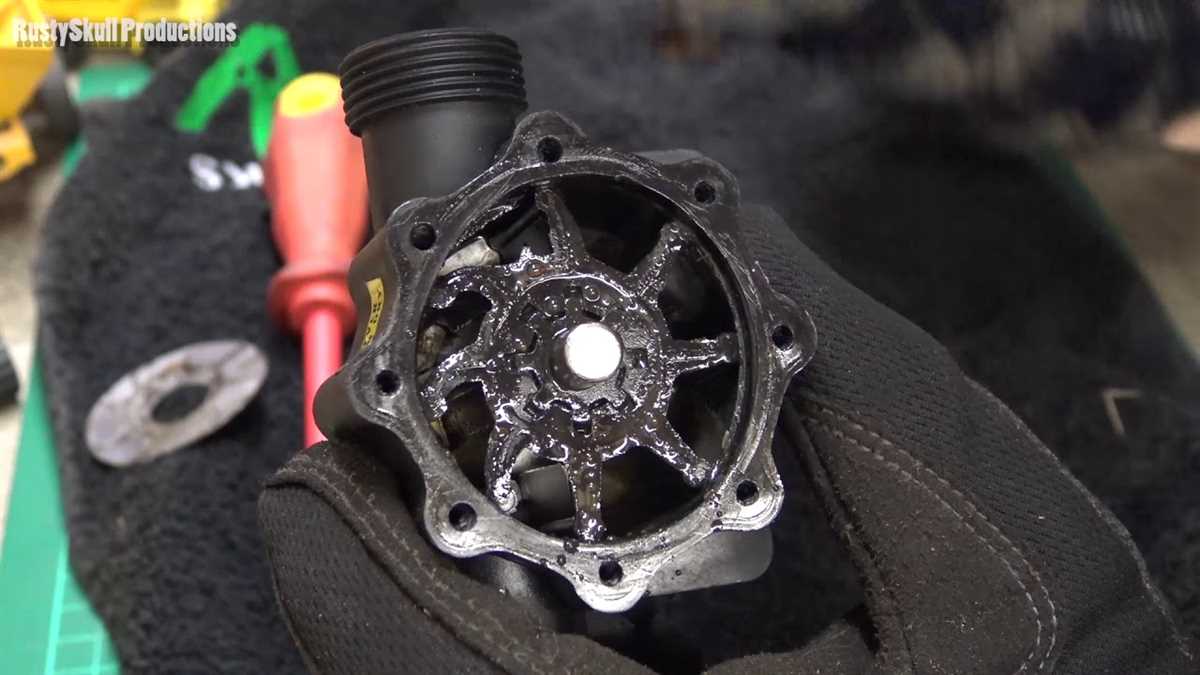
Schedule regular maintenance checks for your drill pump. This can include cleaning or replacing filters, inspecting and tightening connections, and checking for any unusual noises or vibrations during operation. Regular maintenance can help identify and prevent potential issues before they cause extensive damage.
7. Proper storage of hoses and adapters
Keep the hoses and adapters that come with the drill pump properly stored when not in use. This can help prevent tangling, bending, or damage that may affect their performance when connected to the pump.
By following these maintenance and care tips, you can ensure that your drill pump remains in good condition and operates effectively for a long time.
FAQ:
What is a drill pump and how does it work?
A drill pump is a device that can be attached to an electric drill to transfer liquids from one place to another. It works by utilizing the rotational motion of the drill to create a suction force, drawing the liquid into the pump and then expelling it through a hose or outlet.
Can a drill pump be used to pump different kinds of liquids?
Yes, a drill pump can be used to pump a variety of liquids, including water, oil, gasoline, and even some chemicals. However, it is important to make sure that the pump is compatible with the specific liquid being transferred, as some liquids may damage the pump or the materials used in its construction.
What are the advantages of using a drill pump?
Using a drill pump has several advantages. Firstly, it is a portable and lightweight solution for transferring liquids, making it suitable for various applications. Additionally, it eliminates the need for manual pumping or siphoning, which can be time-consuming and tiring. Finally, a drill pump can be easily attached to a drill that many people already have, making it a cost-effective option.
Is a drill pump easy to use?
Yes, a drill pump is generally easy to use. It usually comes with clear instructions on how to attach it to the drill and operate it. The simplicity of its design and operation makes it accessible for both professionals and individuals with little or no experience in liquid transfer.
Are there any limitations or precautions to consider when using a drill pump?
While a drill pump is a convenient tool, there are some limitations and precautions to keep in mind. Firstly, it may not be suitable for pumping thick or highly viscous liquids. Additionally, it is important to ensure that the drill pump is securely attached to the drill and that all connections are well-sealed to prevent leaks. Lastly, it is crucial to follow the manufacturer’s guidelines and precautions for safe and proper usage of the drill pump.
Video:











